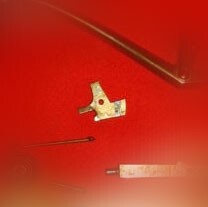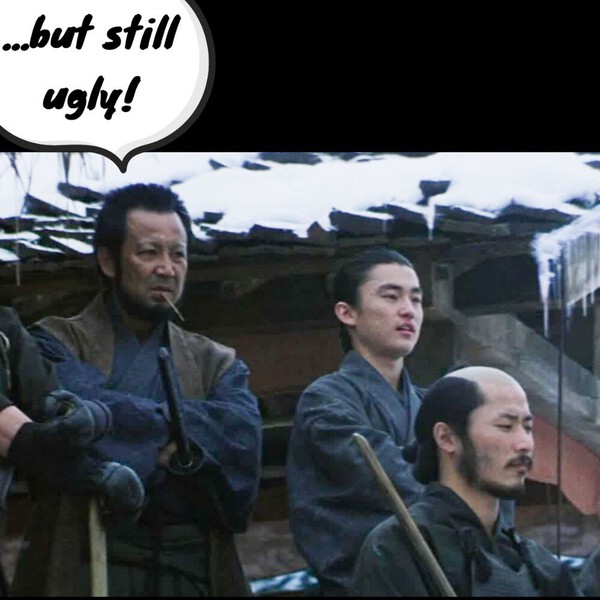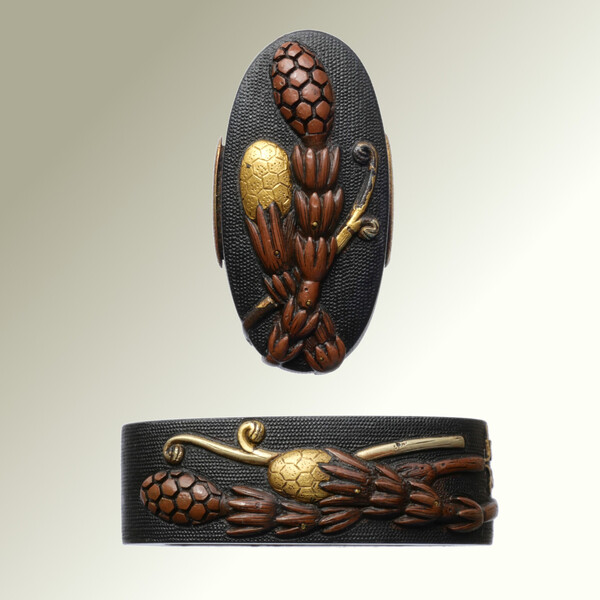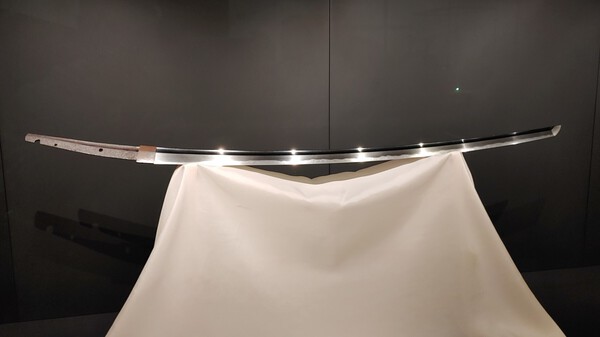-
Posts
501 -
Joined
-
Last visited
-
Days Won
5
Content Type
Profiles
Forums
Events
Store
Downloads
Gallery
Everything posted by Andi B.
-
It is interesting that the act of collecting seems to be more important and fun for collectors, than the actual collection items. Some people collect stamps 😐, others tsuba 😃 or Danish beer bottle caps 🤔 - and sometimes change the topic to start a new collection. I like Japanese antiques and if they are nice and affordable, I maybe buy them. So unintentionally I accumulate pieces and this becomes a kind of collection, but I won't call me a "collector". Because I don't have the urge to "complete" any set based on defined rules, but simply like to be surrounded by curiosities 🏯...
-

How does this Karakuri (外記カラクリ) works?
Andi B. replied to Andi B.'s topic in Tanegashima / Teppo / Hinawajū
I think I figured it out with some styrofoam and rubber bands... I'll try to explain: This moving part has two "fingers" which come in contact with the match holder and a notch for the trigger. If the match holder is cocked, the disk is locked by the trigger and the holder is locked by the "top" finger. By pulling the trigger, the disk can rotate a bit and releases the match holder, because the first finger moves inside the base plate. Bang! 💥 By manually moving the match holder back in the cocked position for the next shot, the second finger will be grabbed and the "disk" rotates back, the trigger locks it again and the first finger locks the match holder again. Here is a little video of my attempt: http://www.zatoichi....B/matchlock-test.mp4 According to my web research this special matchlock type is called Gaki Karakuri / 外記カラクリ and has been invented by a guy named Inoue Kyujuro Masatsugu (~early 17th century). -

How does this Karakuri (外記カラクリ) works?
Andi B. replied to Andi B.'s topic in Tanegashima / Teppo / Hinawajū
yes, thanks. It's really hard to explain in words. Everything is clear except how this below part actually works: which edge is locking which part and how far does it move etc. Only from pictures without seeing the real thing in motion it's a little challenging... 🧐🤔 -

How does this Karakuri (外記カラクリ) works?
Andi B. replied to Andi B.'s topic in Tanegashima / Teppo / Hinawajū
-

How does this Karakuri (外記カラクリ) works?
Andi B. replied to Andi B.'s topic in Tanegashima / Teppo / Hinawajū
I think there are two types of release: no.1 with the sear mounted directly to the shaft (parallel to the base plate / bigger coil spring) and no.2 with an outer leaf spring and this mysterious 90° mounted sear reaching through the base plate and locking the match holder arm. However - it's fascinating what these guys invented... -

How does this Karakuri (外記カラクリ) works?
Andi B. replied to Andi B.'s topic in Tanegashima / Teppo / Hinawajū
Thanks for your efforts, Brian! Below thats a different type of lock but a view from this side >>> would make it easier to understand, how this disc part is located in the mechanism. -

How does this Karakuri (外記カラクリ) works?
Andi B. replied to Andi B.'s topic in Tanegashima / Teppo / Hinawajū
Thanks Brian, I could figure out all parts, and how they should be assembled. Yes, the circled part can rotate, there is pressure by a riveted leaf spring on one side, pressure on the outside from the match holder and it is locked by the trigger part. (Sorry for the confusion: the big outside leaf spring is missing in the initial picture - the circular spring is for the trigger part) But how it moves in action is not clear. Maybe I have to simulate it with a cardboard model... Some side viewes might help.... All parts (image from www): -
Hello, I would like to understand below type of matchlock mechanism - especially how the locking part works. Which edge of the rocker catch locks the match holder and how does it move when unlocking/pulling the trigger and the match holder moves? And also how does it rotate back, when the match holder is cocked again? (How does this mechanism looks from the sides or top?) Can someone please enlighten me?
-
-
-
Here's a Mito school fuchi kashira set with Tsukushi 土筆 (horsetail’s stobilus) design. Depicted are horsetail branches (Tokusa, 木賊) and the eatable spore stems.
- 95 replies
-
- 13
-

-

What’s your go to sword oil?
Andi B. replied to Cookie4Monstah's topic in General Nihonto Related Discussion
I use white mineral oil (DIY-fragranced with clove buds). Only a few drops once or twice a year is sufficient for me - no need to marinate the blades. -
- 95 replies
-
- 11
-

-

-
[Maybe the Echizen Kinai School was in fact founded by a Norwegian speaking Chinese immigrant...]
-
🤔 Hmm, not sure, but I would translate it (with Google of course 😉) as "Echizen Kinai School", place of production Japan - nothing about China...
-
-
-
Kyōharu Sai 京晴齋 Ryōharu Sai 涼晴齋 🤔
-
-
Here're three fan (tastic ;-)) tsuba. No.1 is a simple sukashi tsuba with openings in the shape of fans. No.2 is from the Hayashi School and depicts the well-known "hasen" or "broken fan" theme. It is a classic motif of Nishigaki and Hayashi schools. Broken fans symbolize the Buddhist idea of impermanence. No.3 has also a broken fan design and is made by Akasaka Tadatoki VII. In later times this motif it is most often found with the Akasaka and Bushū-Itō school. This piece is published in 日本のデザイン鐔の美 (目の眼ハンドブック).
-

Nbthk Something To Think About
Andi B. replied to paulb's topic in Sword Shows, Events, Community News and Legislation Issues
Very true, Paul. I waited very long until I became a member of the NBTHK-EB this year. Because I happily have already great contacts, I thought, being a member is not a big benefit...🤦🏻♂️ But now receiving the magazines and trying the Shijo kantei is great. It's in fact the first time I really study my sources - especially the Kantei Zenshu books from Markus! 🕵🏻♂️ I have to admit that the actual knowledge is still outside my brain and in the books but at least I could read my name in the Token Bijutsu already...🕺🏻 -




.thumb.png.8cab8f05099d5102db03d7728fd86ab5.png)




























